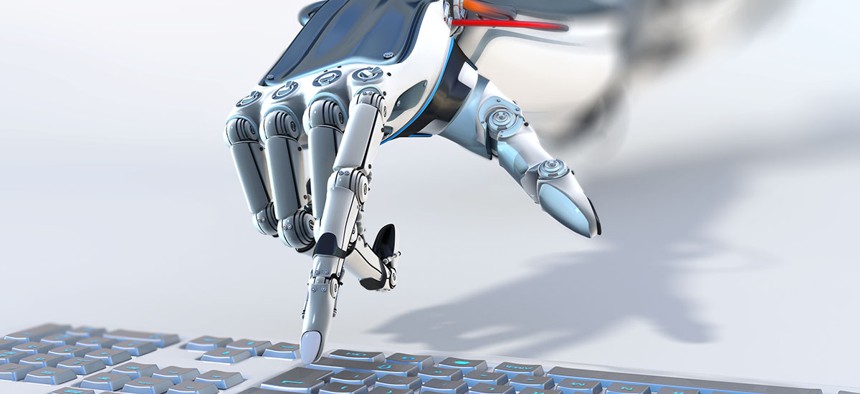It’ll Be Brains vs. Bots in Vegas Cyberwar Sponsored by the Pentagon

Willyam Bradberry/Shutterstock.com
The $2 million Cyber Grand Challenge, sponsored by DARPA, will pit machines against insecure software to pierce the holes -- and fix 'em.
The Pentagon agency that brought you robotic cars will bring robotic hackers to a Vegas resort next month.
The $2 million Cyber Grand Challenge, sponsored by the Defense Advanced Research Projects Agency, will pit machines against insecure software to pierce the holes -- and fix 'em.
The entire event will be shown on screens in the Paris Las Vegas Hotel’s 5,000-person auditorium while sportscasters narrate the competition, according to DARPA organizers. The tournament will run in conjunction with an annual Vegas hacker conference called DEFCON.
The hope is that computers will be able to discover and patch bugs, like the Heartbleed vulnerability, in any commercial software, including the variety that goes into the F-35, organizers say.
The top seven teams from a 2-year-long contest will let their computers run wild at a daylong Capture the Flag-style tournament of code Aug. 4. Competitors range from Raytheon contractors to former University of California, Santa Barbara students now flung all over the world.
» Get the best federal technology news and ideas delivered right to your inbox. Sign up here.
Today, it can take about 312 days to discover a vulnerability in software already out on the market, according to the Pentagon.
The aim of the competition is to "bring that entire discovery-comprehension-patch-response timeline down from a year to minutes or seconds," said Mike Walker, DARPA program manager for the challenge.
Admittedly, the nature of automated cybersecurity does not lend itself to the visual spectacle of robocar "Stanley" navigating the Mojave Desert with no one behind the steering wheel during a 2005 DARPA self-driving car challenge.
"Autonomy in the domain of vehicles is easy to see and grasp," Walker told reporters on Wednesday. "Bringing autonomy to the cyber domain is harder to see because it happens inside the logic and memory of networked computers, and it's an adversarial pursuit."
Killer Robot Hackers?
The results of the coding experiment might be more tangible, if one considers that more than an estimated 20 billion objects containing software will be hooked to the internet by 2020.
“When you buy something that is part of the internet of things on the shelf today, when you look on the back, what you don't have is a sticker that tells you what machine investigated its security and what machine will guard its security in the future," Walker said. "That’s something we could [have] as part of an open technology revolution in computer security automation."
By an open technology revolution, in this case, he means every piece of software the rival machines write will be placed on a public server in perpetuity.
What are the odds that one of these robotic hackers could be repurposed for malicious use by a foreign intelligence agent or cybercrook?
"We believe that all computer security tools are dual use," meaning the systems can be used for commercial or military purposes, Walker said. "They become defensive through openness."
He continued, "If we have an open technology revolution, where the availability of the software is democratized, then we don’t believe that the nefarious misuse will be feasible because the bugs that could be found will already have been patched."
It is unclear how many years it'll be before robots can beat humans at breaking into networks.
"The answer is, ‘I don’t know,’” Walker said. “We are actually trying to prove autonomy before we can say it exists and start speculating about its future development path."
Another test for the concept of robot hackers might come as early as the next day. DEFCON, which every year hosts a human capture the flag game among programmers, has invited the winning automaton to vie against fingers and brains Aug. 5. Walker said he does not expect any machine to win against humans at DEFCON.
"Stanley was a remarkable vehicle that earned its place in the Smithsonian, but it does not belong on an F1 Course," he said.






